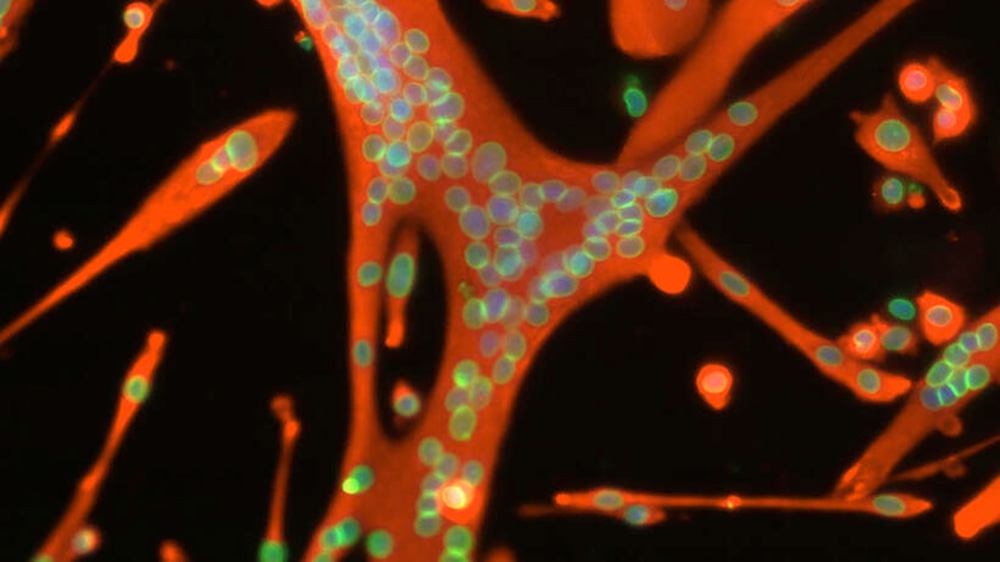Research

Lab Overview
Our lab conducts both in vitro research using cell lines and iPSC cells and in vivo studies using mouse genetic models. Previous studies have included seminal publications on transcriptional regulation and miRNA-mediated post-transcriptional regulation that have produced significant contributions to our understanding of the molecular mechanisms controlling cardiac, skeletal and smooth muscle gene expression and function. The current research in the lab has focused on five major areas:
- Transcriptional and epigenetic regulation of gene expression in the cardiovascular system
- microRNAs in cardiac development, cardiac function and cardiomyopathy
- The roles of miRNAs and epigenetic regulators in skeletal muscle biology
- Novel lncRNAs in cardiovascular biology and disease
- Molecular mechanisms of cardiac remodeling and stress-induced cardiac defects
-
Cardiovascular Gene Regulation
We study how epigenetic factors impact the function of cardiac transcription factors. It is our hope that these studies will lead to the identification of molecules which might serve as targets for new drug development and diagnosis of cardiovascular diseases.
-
Role of miRNAs and lncRNAs in the Heart
Our lab has demonstrated that loss of microRNAs (miRNAs) in the cardiovascular system leads to severe cardiac defects and lethality in animal models. Our studies have demonstrated that they play a key role in controlling cardiac homeostasis in response to pathological and mechanical stress. They have also uncovered a role for miRNAs in cardiomyocyte proliferation and cardiac regeneration. Our lab has also demonstrated that a lncRNAs can regulate vascular smooth muscle cell proliferation and are now studying their role in cardiac tissue.
-
Epigenetic Regulators
Our group was among the first to demonstrate a functional role for miRNAs in skeletal muscle. One of the key contributions was the demonstration that miRNAs could repress the proliferation of skeletal muscle stem cells (satellite cells). We are currently investigating the in vivo function of miRNAs in skeletal muscle cells and muscle regeneration.
-
Role of Cellular Stress on Cardiac Function
Role of Cellular Stress on Cardiac FunctionIt is well documented that the heart undergoes remodeling in response to physiological and pathological stress but the mechanisms remain to be defined. We have linked miRNAs to cardiac remodeling and cardiomyopathy and demonstrated that they can be key regulators of cardiac hypertrophy and heart failure.
Selected Publications
New Insights Into the Molecular Underpinnings of LVNC. Mably JD, Wu JC, Wang DZ. Circulation. 2022;145(8):603-605. PMID: 35188799.
LncRNA LncHrt preserves cardiac metabolic homeostasis and heart function by modulating the LKB1-AMPK signaling pathway. Liu N, Kataoka M, Wang Y, Pu L, Dong X, Fu X, Zhang F, Gao F, Liang T, Pei J, Xiao C, Qiu Q, Hong T, Chen Q, Zhao J, Zhu L, He J, Hu X, Nie Y, Zhu W, Yu H, Cowan DB, Hu X, Wang J, Wang DZ*, Chen J*. Basic Res Cardiol. 2021; 116(1):48. PMID: 34379189. (*co-corresponding authors).
Non-coding RNAs in cardiac regeneration: Mechanism of action and therapeutic potential. Wang Y, Chen J, Cowan DB, Wang DZ. Semin Cell Dev Biol. 2021; 118:150-162. PMID: 34284952.
Intercalated disc protein Xinβ is required for Hippo-YAP signaling in the heart. Guo H, Lu YW, Lin Z, Huang ZP, Liu J, Wang Y, Seok HY, Hu X, Ma Q, Li K, Kyselovic J, Wang Q, Lin JL, Lin JJ, Cowan DB, Naya F, Chen Y, Pu WT, Wang DZ. Nat Commun. 2020; 11(1):4666. PMID: 32938943.
Regulation of myonuclear positioning and muscle function by the skeletal muscle-specific CIP protein. Liu J, Huang ZP, Nie M, Wang G, Silva WJ, Yang Q, Freire PP, Hu X, Chen H, Deng Z, Pu WT, Wang DZ. Proc Natl Acad Sci USA. 2020; 117(32):19254-19265. PMID: 32719146.
Loss of Phosphatase and Tensin Homolog Promotes Cardiomyocyte Proliferation and Cardiac Repair After Myocardial Infarction. Liang T, Gao F, Jiang J, Lu YW, Zhang F, Wang Y, Liu N, Fu X, Dong X, Pei J, Cowan DB, Hu X, Wang J*, Wang DZ*, Chen J*. Circulation. 2020; 142(22):2196-2199. PMID: 33253002 (*co-corresponding authors).
Long noncoding RNA Cfast regulates cardiac fibrosis. Zhang F, Fu X, Kataoka M, Liu N, Wang Y, Gao F, Liang T, Dong X, Pei J, Hu X, Zhu W, Yu H, Cowan DB, Hu X, Huang ZP, Wang J, Wang DZ*, Chen J*. Mol Ther Nucleic Acids.2020; 23: 377-392. PMID: 33473324. (*co-corresponding authors).
Therapeutic role of miR-19a/19b in cardiac regeneration and protection from myocardial infarction. Gao F, Kataoka M, Liu N, Liang T, Huang ZP, Gu F, Ding J, Liu J, Zhang F, Ma Q, Wang Y, Zhang M, Hu X, Kyselovic J, Hu X, Pu WT, Wang J, Chen J, Wang DZ. Nat Commun. 2019; 10(1):1802. PMID: 30996254.
Long non-coding RNAs link extracellular matrix gene expression to ischemic cardiomyopathy. Huang ZP, Ding Y, Chen J, Wu G, Kataoka M, Hu Y, Yang JH, Liu J, Drakos SG, Selzman CH, Kyselovic J, Qu LH, Dos Remedios CG, Pu WT, Wang DZ. Cardiovasc Res. 2016; 112:543-554. PMID: 27557636.